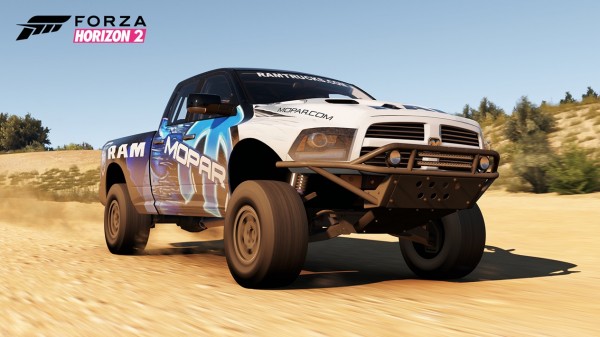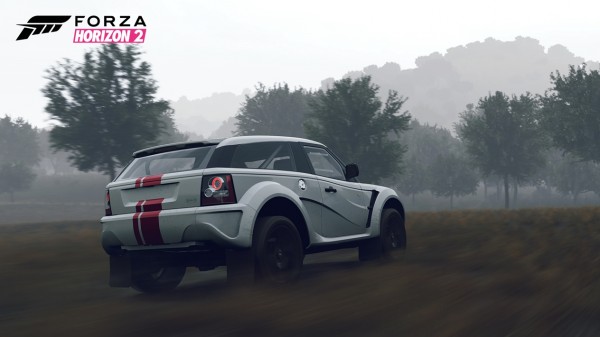
A few developers made the long trip ‘Down Under’ from all over the globe to attend the EB Games Expo 2014. One in particular missed his own launch party for the commitment – Ben Penrose, Art Director on Forza Horizon 2. Based out of Royal Leamington Spa in Warwickshire, England, the team at Playground Games pleasantly surprised everyone by helming an off-shoot of the previously simulation-only, circuit racer Forza Motorsport, and taking the franchise into an open-world, more arcade-y setting with Forza Horizon in 2012, and doing so in amazing fashion. A critical hit, its sequel looks to be even more so, proving the developers’ mettle. We got to spend about ten minutes with Ben, who got into the country at the start of the week, avoiding jetlag and drinking his coffee bright and early before doors opened for the public…well, at least attempting to! (Sorry, Ben! Got ya twice! I’m so horrible…)

So, we’ve gone from Colorado in the U.S. to parts of Italy and France for Forza Horizon 2. What went into the decision-making process and, ultimately, the final decision to set the game in Southern Europe?
Well, when we made the first one, we got to the end of the process, and…quite often, when you’re making a game, you spend all this time making it and you never really get the chance to properly digest it as a thing sometimes. So what we did was we took some time off and afterwards, we played it and we talked to people, such as the press, and we got everybody’s opinion, kind of channelling everyone’s feedback into one place, trying to work out exactly what it was that people connected with in Horizon. And we called this an “emotional core exercise”, so at the end of it the idea was we find out exactly what made Horizon Horizon, with the view that next time we ramp those particular, specific dials up. And that worked really well. In terms of the artwork and setting, one of the things we sort-of centered on was this concept of “Horizon beauty”, and we called it Horizon beauty because it’s a very specific implementation of pretty. What that is, is something that’s maybe not particularly traditional for video games, but it was the kind of thing you’d want to drive a supercar through or alongside, so poppy fields are very naturalistic; picturesque vistas; landscapes…we had quite a lot of that in Colorado, and when we started picking the next place, Southern Europe just had so many things that kinda ticked those boxes in terms of natural beauty and things that people just go nuts with when they’re on holiday, and take pictures of. So yeah, it was kinda like a no-brainer, because there’s literally so much there that we could sink our teeth into for that particular feeling.

Being closer to home than Colorado, I’m assuming you definitely made the trip down to these locations for reference. How much time did you spend there?
So, on the first one, when we sent the guys over, they were gone for like a month, because you have to get a lot of material to make a game. And it’s an expensive trip to go to Colorado, so we did it all in one way because it was so far away, and when we did this one in Europe, because it’s obviously so much closer, it meant we could go in shifts, which was actually quite useful because it meant we could go over there and do a bit of France and then bring the stuff back and kind of assess what we manage to get before we went out for the next one.
Clearly it’s not a 1:1 recreation of the landscape and layouts of these areas, so what parts did you have to change to better accommodate an open-world racing experience? Because realistically, not every road layout is as it is in real life is going to be conducive for such gameplay, right?
The design team did a really good job on taking the original roads – because they are very much the original roads – and they kind of twisted them and turned them into these amazing racing circuits. It’s good, as you kinda take the original landscape and you turn it into a giant landscape. So it’s thanks to those guys that it plays so well basically, because they did a good job of carving out these paths. We spent ages racing around a particular area, and if it didn’t feel quite right and you couldn’t fall into it in a way that feels satisfying, we’d tweak things so you do.

With the fantastic new lighting system and weather effects that are possible in Forza Horizon 2, how did you find the experience of working with and in consideration of these tools in the art department?
We actually developed a couple of things specifically for the game. So, on the first game, we went through this really elongated process, especially when it came to lighting, in designing the sky, and we had an artist go around literally picking the colours they would punch into the sky; so a particular kind of blue for midday, and that would have to be animated. And it’s actually a really difficult thing to get right. So what I wanted to do in the sequel was try and remove that issue entirely, and we had one of our rendering engineers basically produce a model of the atmosphere in its entirety, which is incredible – he’s a very intelligent guy. What that did was, instead of us picking colours, it allowed us to say “the sun is here and it is this powerful, as is the Sun in the real world” and it literally scatters through the atmosphere and produces all of the colours and atmospheric effects you would see in real life. So it completely removed that headache, but the other thing that’s really cool is it allowed us to dial into exactly where we’d set the game; so we could put in certain latitudes, you know, we could actually make the sky reference the position in Southern France where we’ve set the game. And as is quite famous, particularly in that part of the world…you know, it’s been visited by artists and photographers for literally hundreds of years because the quality of the light is so particularly great. So what was cool was, we actually had a chance to replicate it in digital form, and I like to think that when you play the game, you see the light bouncing off the cars and everything and we have somehow managed to capture a little bit of that magic.

So this is a cliché question, but with early reviews coming in, and the game receiving such high praise, what are you most proud of overall, but also personally with your own contributions as Art Director?
When we went out to do the original research trips, especially the ones in Tuscany, I completely fell in love with the landscape because I had actually never been there myself; so it was the first time I’d visited. And I remember thinking “if we can make this look like this in the game, people are going to have a lot of fun with this world” because it’s so completely different to every other open-world experience I think is out there in terms of how it is represented visually. And during production I was playing the game and driving through these hills, and I thought “do you know what, I think we’ve actually managed to do this”. I was having memories of driving around in our research trips which was exactly what I wanted to happen. So, it is an example of a plan that came together perfectly.

Well thanks so much Ben, it was really cool talking to you. I should have my own copy today or tomorrow.
No worries, it’s been a pleasure! I’ll see you on the roads.
Thanks again to Ben Penrose, Art Director on Forza Horizon 2 over at Playground Games for the time. For the record, I attempted to futilely fish for any hints at future entries’ settings (expected an artful dodge, naturally), but Ben answered that, with the team having just celebrated their launch, they are probably still suffering from the hangovers. The plan is to take a much deserved break, but select members had seen some locations on previous research trips that enticed them (makes me want to know which ones even more!). For now, we’ll also be taking a break…from our lives that is, as we play Forza Horizon 2, available now worldwide, exclusively for the Xbox One and Xbox 360.

